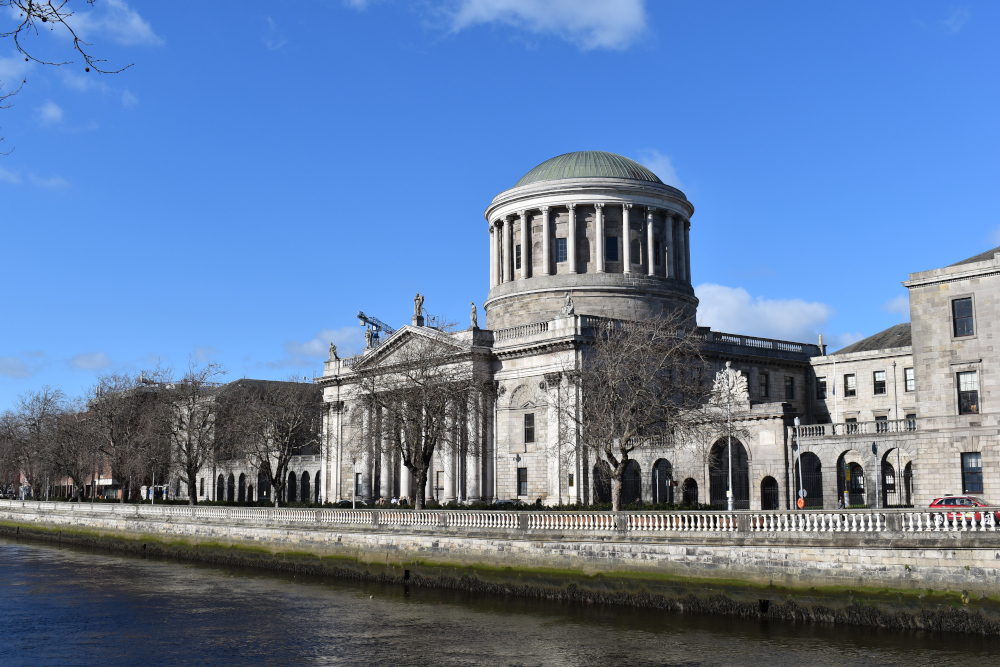High Court: Lacuna identified in planning legislation

The High Court has identified a lacuna in the Planning and Development Act 2000 arising where judicial review proceedings are brought following a grant of planning permission.

About this case:
- Citation:[2025] IEHC 540
- Judgment:
- Court:High Court
- Judge:Mr Justice David Nolan
Delivering judgment for the High Court, Mr Justice David Nolan noted: “It may well be that primary amending legislation may be necessary, since without it, there does not seem to be an easy way to resolve the admittedly, unacceptable situation of there being both a grant of planning permission and an appeal in existence from the very same planning permission.”
Background
In November 2022, Breedon Cement Ireland Ltd, the operator of a cement, asphalt, limestone and shale quarry in Co Meath, was notified of Meath County Council’s decision to grant planning permission for a “deepening” of the northwestern portion of its existing quarry extraction area over 4.13 hectares.
The applicant, a farmer and neighbour to the quarry, did not object to Breedon’s application at the relevant time but, without notice to the other parties, sought leave to appeal pursuant to section 37(6) of the Planning and Development Act 2000, which application was rejected by An Bord Pleanála on 15 December 2022.
On 20 December 2022, Meath County Council made the grant of planning permission. This prompted the applicant to bring judicial review proceedings against the Board challenging its refusal, and on 23 January 2024, the High Court quashed the Board’s decision of December 2022 and remitted the application back to it.
Subsequently, on 26 February 2024 the Board granted leave to appeal and on 11 March 2024, the applicant made his appeal.
In the meantime, and being unaware of the legal developments, Breedon had commenced its development in April 2023.
The issues
Before Mr Justice Nolan, the applicant applied for a stay on the implementation of the planning permission against Meath County Council and against Breedon pending the determination by the Board of the applicant’s proceedings.
The applicant alleged inter alia that the development encircled his farm and would have a very significant negative impact on him, and that his health, marriage, farming activities and livelihood had been devastated over many years as a result of emissions and discharges from Breedon’s activities.
The fundamental issue before the court, therefore, was the effect of the appeal lodged by the applicant to the Board, which the applicant contended to have the effect of staying the planning permission granted pending the determination of his appeal.
The High Court
Mr Justice Nolan examined sections 34 and 37 of the 2000 Act, which concern the interplay between planning permissions and appeals.
The court observed that on the face of section 34, where a planning authority decides to grant planning permission and there is no appeal, it must then make the grant sought, and pursuant to section 37, the effect of an appeal means that the Board shall determine the application as if the application had been made to it in the first place and thus, if the Board upholds the planning authority’s decision, then it becomes a decision of the Board rather than the planning authority.
The judge further noted that section 37(6) deals with the circumstances of persons such as the applicant with an interest in land adjoining land the subject of a grant of permission, with the effect of preventing a planning authority from granting permission unless an application for leave to appeal is refused.
Finding that the provision is framed on the assumption that any applicant would move with speed, Mr Justice Nolan considered that that did not happen in the applicant’s case and that the legislation did not envisage the bringing of a judicial review with the effect of having in place both a grant of planning permission and an appeal to the Board at the same time, representing a lacuna in the law.
Having considered the submissions of the parties and the relevant case law, the court explained that the planning act has created two steps: firstly, the making of a decision to grant planning permission, which is then notified to any potential appellants and stayed should they bring an appeal; and secondly, the making of a grant of planning permission.
The court observed: “It seems to me that the provisions of section 34(11) are clear. Where the planning authority decides to grant planning permission and no appeal is taken against that decision, it must grant it as soon as maybe after the expiration of the period for taking an appeal. That is what happened here. It is only in circumstances where the appeal is withdrawn, dismissed or in the unique circumstances of section 139, that it should make a grant. If the mere making of an appeal annulled the decision, then there would be no decision to support the making of a grant.”
Mr Justice Nolan considered that primary amending legislation may be necessary, as without it, no easy route to resolving the “admittedly, unacceptable situation” of there being a grant of planning permission and an appeal in existence from that same planning permission is available.
In the circumstances, the court determined that the precise words of legislation did not permit the interpretation urged by the applicant, where it would be unsound to construe the statutory provisions so as to provide for a stay where a grant of planning permission, as opposed into a decision to grant planning permission, has been made.
As to the merits of the applicant’s application for judicial review, the court opined: “Ironically the difficulty which this case highlights, is one which derives from his failure to engage with the planning permission sought by Breeden [sic] in the first place.”
The court did not accept the applicant’s assertions as to his concerns about the development which it found to be unsupported by evidence, noting that permission was granted with all appropriate statutory bodies being engaged and that Breedon had acted lawfully and in accordance with its permission.
Mr Justice Nolan also pointed out that the applicant had commenced his proceedings on the basis that the proposed development surrounds and encircles his farm and dwelling house, a matter which was “simply untrue”.
Conclusion
Accordingly, the High Court refused the application for a stay on the basis that a valid grant of planning permission existed and that the balance of justice did not favour granting a stay.
Payne v Meath County Council & Ors [2025] IEHC 540








